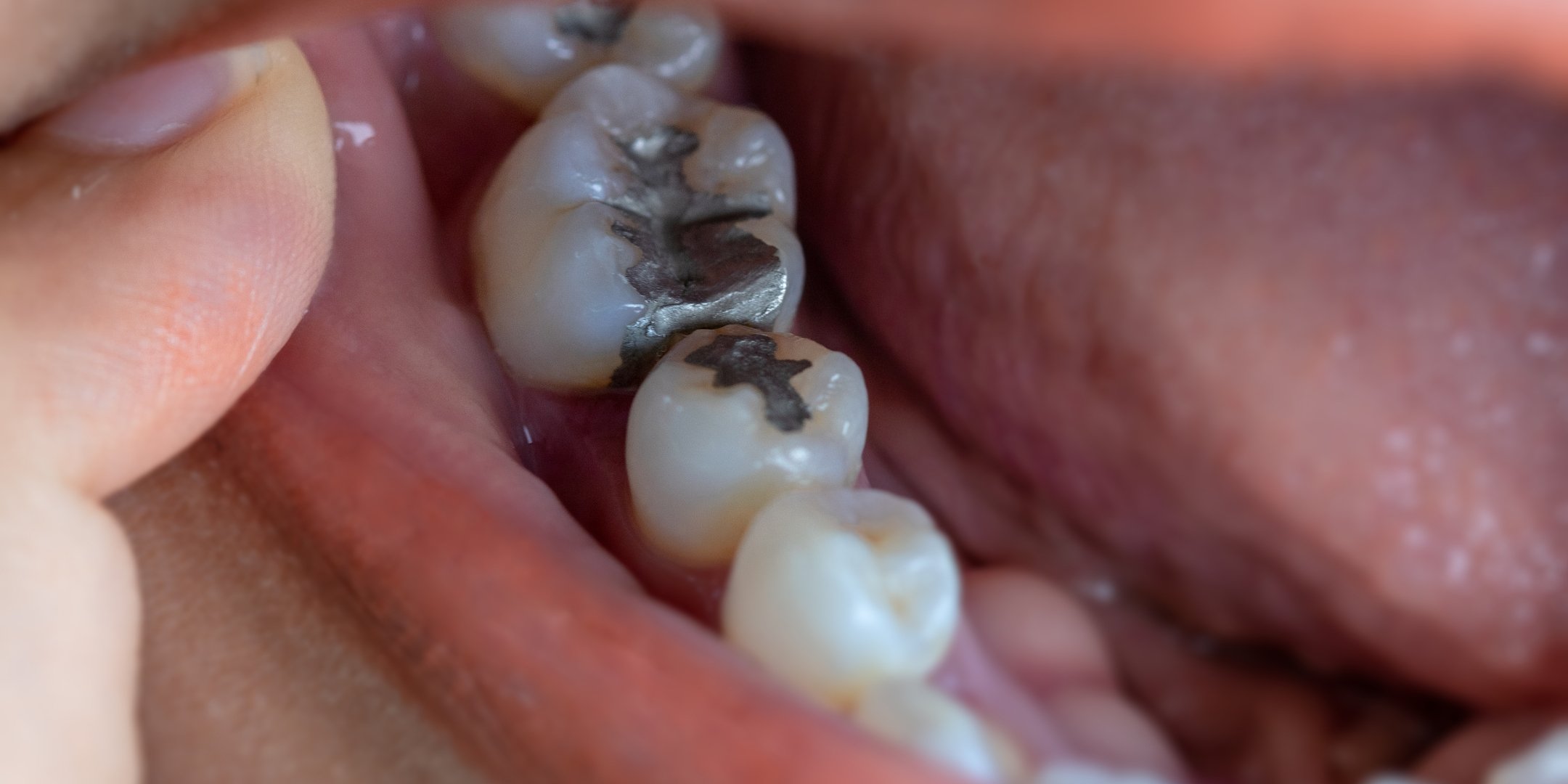- Gum inflammation is a common dental condition caused by the development of plaque on the teeth and gum line.
- If left untreated, gum disease may lead to tooth and jawbone loss.
- A variety of professional and at-home treatments are available to treat gum inflammation.
- Patients can prevent gum disease by practicing proper oral hygiene at home.
Gum inflammation is an infection of the soft tissues that hold the teeth in place. Symptoms include red, irritated, bleeding, and swollen gums. Patients may also have mouth sores, receding gums, and bad breath.
The condition is caused by a buildup of plaque on the teeth and around the gum line. Let’s take a closer look at how gum disease is treated and how to prevent it.
Who Is at Risk for Gum Disease?
We all have the potential to develop gum problems. If we do not brush and floss effectively, our gum tissue may become infected and inflamed, leading to some form of periodontal (gum) disease.
According to the American Academy of Periodontology, people who are at advanced risk for developing inflamed gums include those who use tobacco, patients with cancer who are in chemotherapy treatment, and women experiencing hormonal changes, like puberty, menstruation, pregnancy, and menopause.
Malnutrition, certain medications, stress, systemic diseases, teeth grinding, obesity, and genetics can also lead to gum inflammation. In addition, 70 percent of Americans aged 65 or older have some form of swollen gums.
Non-Surgical Professional Treatments
Professional dental treatment controls gum infection and improves oral health. Treatment methods vary depending on the extent of the disease, with non-surgical and surgical interventions available to patients.
Deep Cleaning
The first line of treatment for early gum disease is a careful, in-depth teeth cleaning, also known as scaling and root planing. It is different from a regular cleaning, which typically takes place above the gum line.
During a scaling treatment, dental professionals use special manual tools or ultrasonic devices to scrape plaque off the gum line and in the pocket area between the teeth and gums. During a root planing treatment, hygienists use a scaling instrument to remove plaque and tartar from the roots of the teeth. This technique helps the gums reattach to the tooth.
Deep cleaning methods may take more than one trip to the dentist, along with a follow-up appointment to ensure proper and continuous improvement in gum health.
Medication and Rinses
Dentists may prescribe medication or an oral rinse as part of treatment for gum inflammation.
Antiseptic chips and antibiotic microspheres are particles inserted into the infected gum pockets. They release medication slowly over time, which helps reduce the pocket size and expel plaque and bacteria. Similarly, an antibiotic gel can be used to spread on gum pockets.
Enzyme suppressants, which come in tablet form, may also be prescribed. These pills block certain types of mouth enzymes from breaking down gum tissue. For more severe gum infections, oral antibiotics are prescribed.
Periodontitis and Surgical Procedures
Advanced cases of gum disease such as periodontitis may require oral surgery. These are the most common treatment options:
- Gum graft surgery involves oral surgeons taking soft tissue from another part of the mouth, such as the palate, to cover exposed tooth roots with the tissue and prevent bone loss or decay. The procedure helps reduce tooth sensitivity.
- Flap surgery allows periodontists to remove infection deep underneath the gum line. A small incision is first made in the gums, which are lifted to remove underlying bacteria. Then, once the tissue is clean, it is tightly stitched back into place around the tooth. This technique helps prevent more tartar from forming.
- Bone grafting is performed when periodontitis erodes the bone surrounding the tooth root. The graft may be comprised of small fragments of the patient’s bone taken from the jaw, hip or tibia. Donated or synthetic bone may also be used. The graft helps prevent tooth loss by holding the tooth securely in place and also serves as a platform for natural bone regrowth.
- Guided tissue generation allows the regrowth of bone that was destroyed by bacteria. During the procedure, a piece of biocompatible fabric is placed between the tooth and the existing bone. The unique material prevents unwanted tissue from entering the healing area, allowing the healthy bone to grow back instead.
Gum Inflammation Treatment Costs
Gum inflammation treatment costs vary depending on the type of procedure required. Deep cleaning with scaling and root planing typically costs between $100 and $450 for one quadrant of the mouth. The process can run $500 to $4,000 for the entire mouth, depending on the amount of work and antibiotic treatment required.
Antibiotic injections at the dentist’s office typically cost between $35 and $85 per dose, per tooth. Many oral antibiotics are low cost, around $15 to $20 with health insurance.
Gum grafting surgery typically costs between $700 and $1000 for a single procedure on a small site, such as one or two teeth. In general, surgical gum disease treatments can cost anywhere between $500 and $10,000.
Consulting with a dentist can help determine payment options for each specific treatment. Insurance discounts and financing plans may be available.
Risks and Results
Professional treatment is designed to relieve infection of the gums effectively, but patients must do their part. It is important to follow dentist’s instructions carefully in how to improve oral hygiene and help in the gum healing process at home.
Patients should take prescribed antibiotics as required after scaling and root planing treatments as bacteria may enter the bloodstream after deep cleaning, making it essential to prevent any chance of further infection. Patients with immune system problems should talk to their dental professional, as they could be at a higher risk of infection.
Any surgical procedure carries some risk of complications; both minimally invasive and surgical procedures can cause tooth and gum discomfort so dentists may recommend an over-the-counter pain medication to relieve tenderness.
No matter the type of treatment, it is important to return to the dental office for follow-up appointments to ensure proper healing.
Treating Gum Inflammation at Home
It is possible to reduce gum inflammation with proper oral hygiene: always brush in the morning and at night, floss in the evening, and add an antibacterial mouth rinse to remove bacteria.
Saltwater rinses, oil pulling, hydrogen peroxide rinses, and black tea bag compresses are some of home remedies that could reduce gum swelling and discomfort. If home remedies fail, seek professional assistance since gum disease can worsen and ultimately lead to tooth loss.
It is also important not to use saltwater rinses for too often or too long as they can erode tooth enamel. In addition, fractionated coconut oil should never touch the back of the throat, as the concentrated formula can lead to burning.
Saltwater Rinses
A 2016 gum inflammation study showed that saltwater is effective in reducing pain and swelling.
Add ½ to ¾ teaspoon of salt to a glass of lukewarm water. Mix the solution thoroughly, then swish it around in the mouth for up to 30 seconds. Spit out the liquid and repeat the practice two to three times daily, being mindful not to swallow it.
Oil Pulling
A recent medical study found that using coconut oil for oil pulling reduces plaque and signs of gingivitis. A teaspoon or two of fractionated coconut oil is all that is necessary.
To complete the process, swish the oil around for 20 to 30 minutes, then spit it. After rinsing with water, spit it out again. Next, drink a full glass of water, then brush.
Preventing Gum Inflammation
Consistent and proper oral hygiene is the most efficient way to avoid poor gum health. Patients should always brush and floss as directed by the dentist and use an antibacterial mouthwash. Additional tips include replacing toothbrushes every three months and trying an electric toothbrush to optimize cleaning. Some lifestyle changes can also be useful:
- Follow a healthy diet with minimal sugar and plenty of fruits and vegetables.
- Consume an abundance of vitamin C and calcium.
- Drink plenty of water, especially after eating, to wash food away and prevent bacteria from forming into plaque.
- Manage stress properly, since high levels of stress can lead to gum inflammation.
- Avoid tobacco.
Even with excellent oral care, some plaque around the gums may harden into tartar which needs to be removed by a dental hygienist. Regular teeth cleaning visits take care of tartar removal and allow your dental professional to watch for any signs of inflammation.
When to See a Dentist
Patients should make an appointment with their dentist if they think they have the signs of gum inflammation, especially if home care does not improve symptoms.









